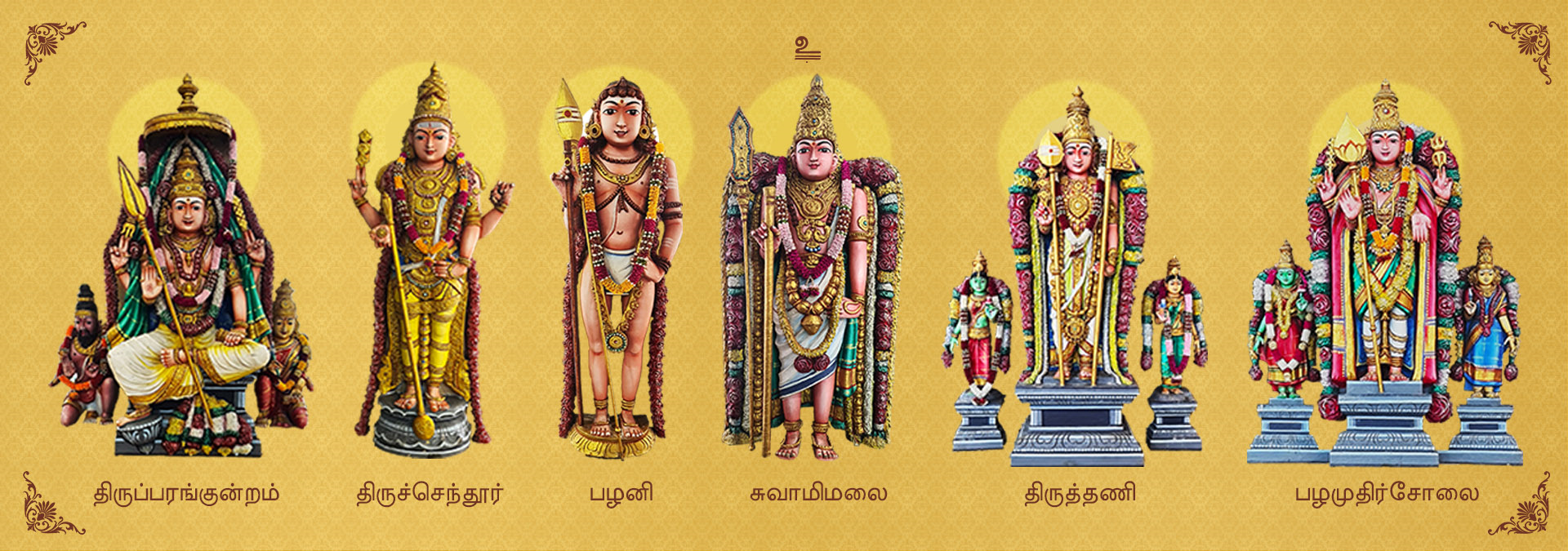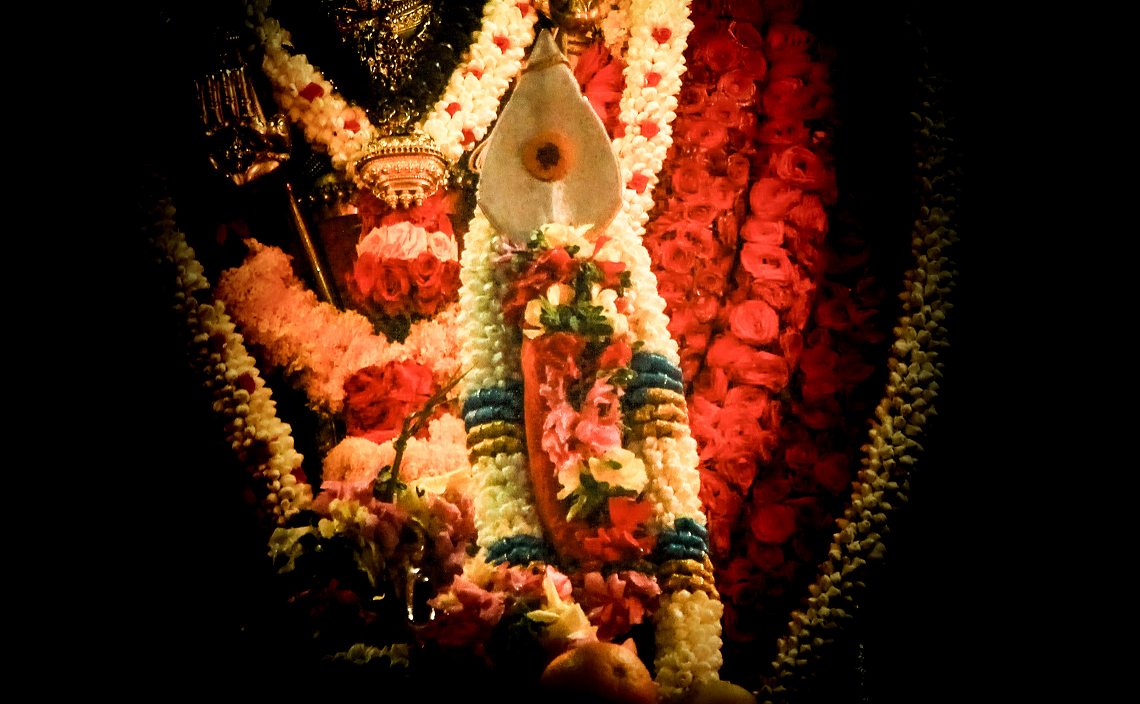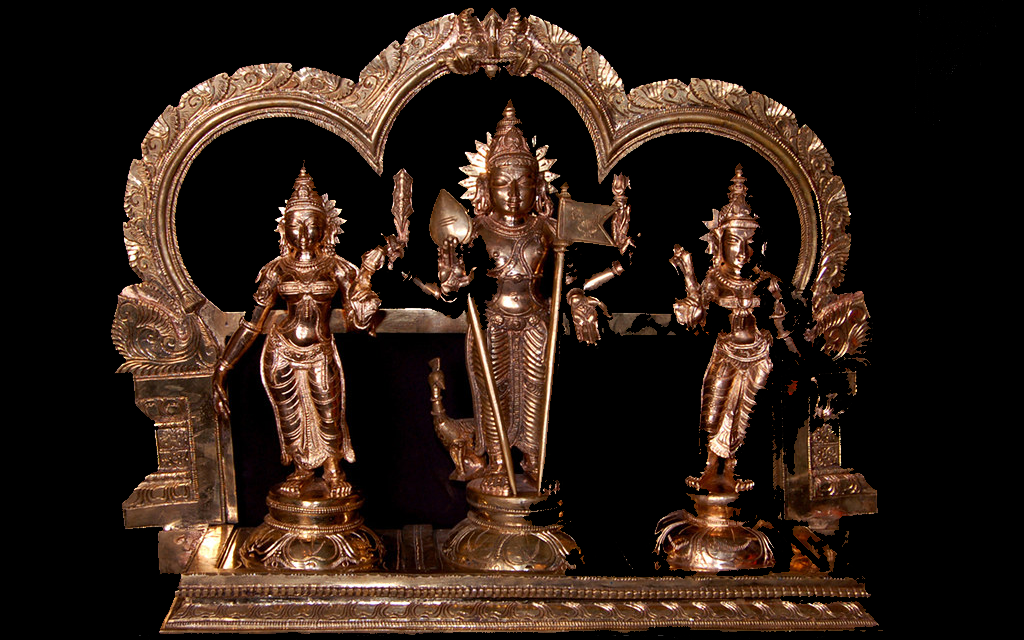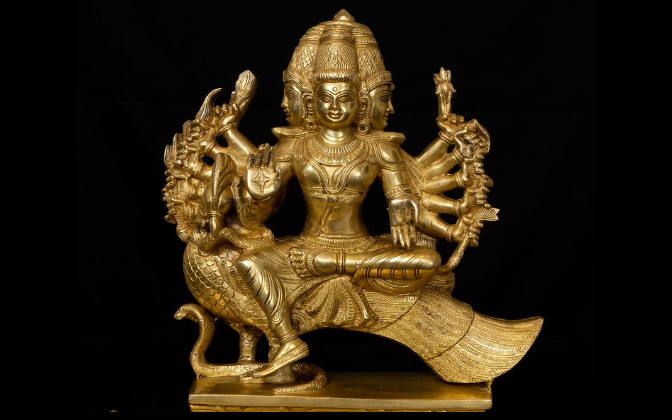
Core of all the Divine Energies
The Kaumaras or those who regard and worship Kumara, Skanda, Shanmuga or Karthigeya as the Supreme Being, belong to one of the sects of the Hindu faith. The other five being Ganapathyam (worship of Ganesa), Saivaism (worship of Lord Siva), Vaishnavaism (worship of Lord Vishnu), Shaoram (worship of Sun) and Saktham (worship of Shakthi). This division was devised by the Saint Aadi Shankara. Thirumurugaattruppadai and Paripadal A review of references in early Tamil literature points to the conclusion that the worship of Muruga is very ancient among the Tamils.
The work of Thirumurugaattruppadai devoted entirely to the extolling of Murugan, is attributed to Nakkirar, a celebrated bard of the early period. The poems in the Paripadal, which are exclusively in praise of Chevvel (The Red One), are the earliest. Besides the two works, a number of references are made about Muruga in the oldest Tamil grammar book Tolkapiyam that says that the mountain region is dear to Cheyon (Cheyon Meya Maivaraiyulagamum). There is also reference in Porulathikaram to veriyadal-to dance in frenzy-the dance of invocation to Muruga, conducted by a person called Velan. He was named as such as he holds a spear in his hand while he dances.

The Holy Vel (Spear)
The Vel of Murugan, which is identical with Him, is a mystic divine weapon with which He destroyed the Asuras. The Vel, which is Wisdom-Absolute, also annihilates the inner Asuras or Enemies of Avidya, Karma and liberates the Jiva (Soul) from transmigration. The Vel is a mysterious divine power and is referred to by Saint Arunagiri as the Mantra Vel in one of his Thiruppugazh (Songs of praise of God or the Glorious One). It is not surprising therefore that the emblem of this divinity, Vel, is the object of worship in some of the shrines of Murugan.
Devotees carrying Kavadis also use Vel. The very word Vel has the mystic powers of invoking the grace of Murugan and therefore devotees chant “Vel, Vel”, “Veera Vel”, “Gnana Vel”, “Shakthi Vel”.
Consorts
Teyvayanai and Valli are the consorts of Murugan. Teyvayanai is the daughter of Indran, the King of the Devas (Celestials) and Valli is the pretty daughter of the hunting tribe. In another words the former belongs to the Heavens and the later to the mountainous regions of this world.
Murugan with His consorts is described in Paripadal thus: “O Lord Muruga, perhaps wishing to reside in this world even as you reside in the Heavens, you reached Katampu tree, the significance of which is hard to comprehend even by the wise; you married Valli in order to make the people of this world live in happiness in the same manner as you do for the Devas in the upper world; which marriage is in fact a contrast to your marriage to Teyvayanai”.


The Six Faces
- One face sheds ray of Light and removes the dense darkness shrouding the world.
- One face with gracious look lovingly showers boons on his devotees who praise Him with Love and Joy.
- One face watch over the sacrifices of the Brahmans who perform them without deviating from the strict Vedic traditions.
